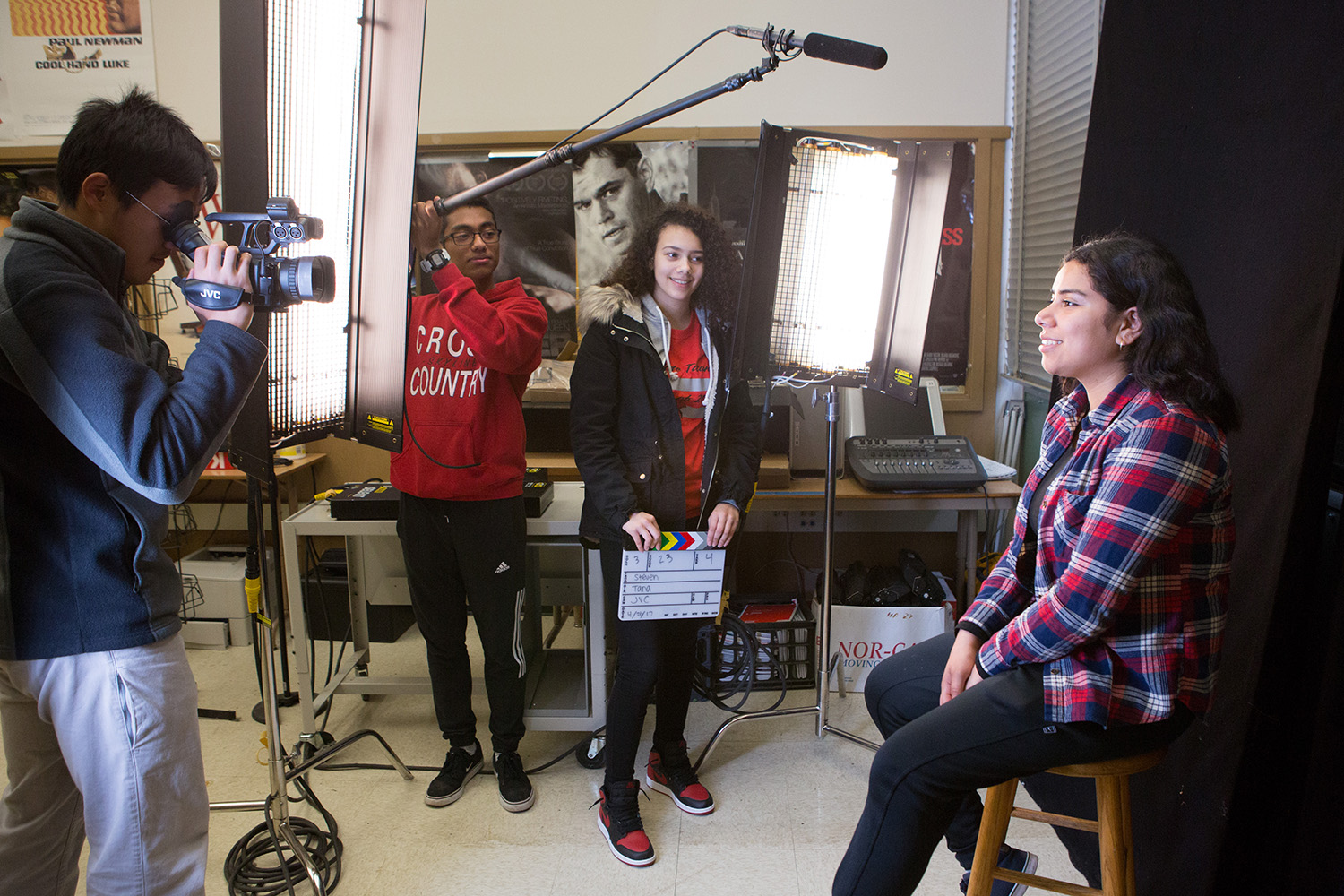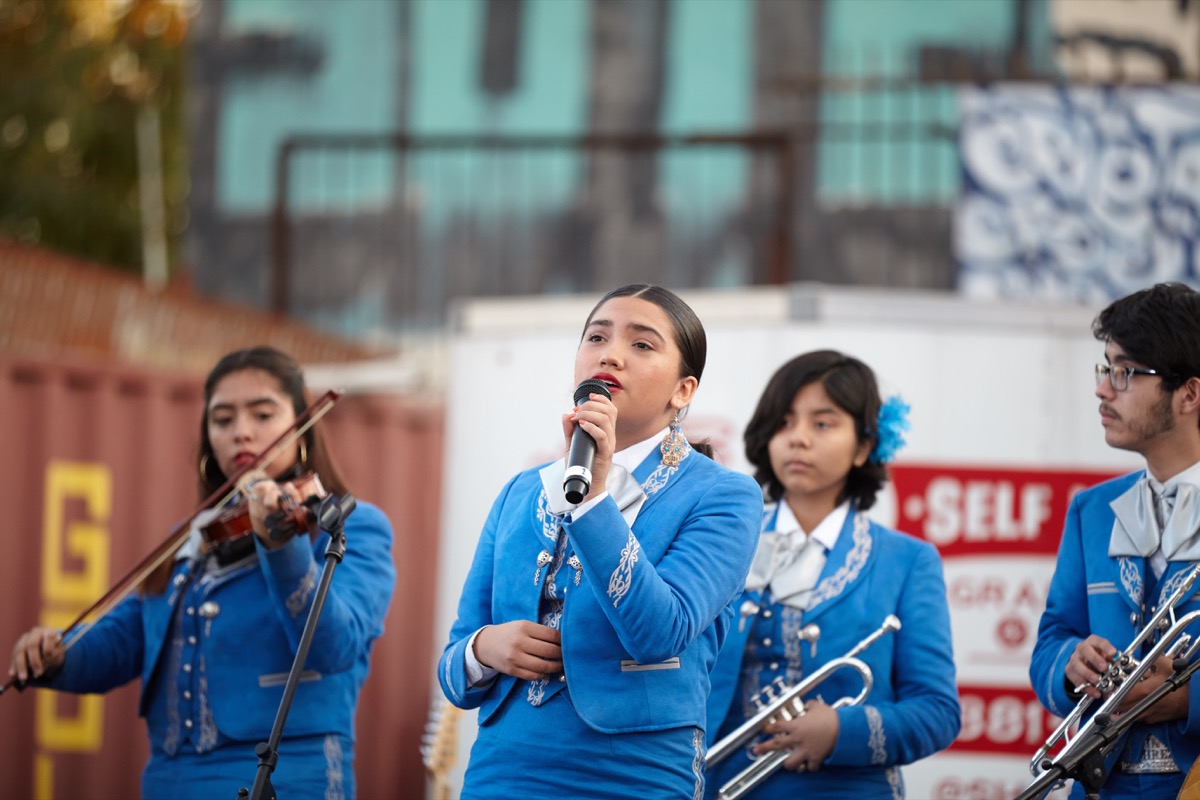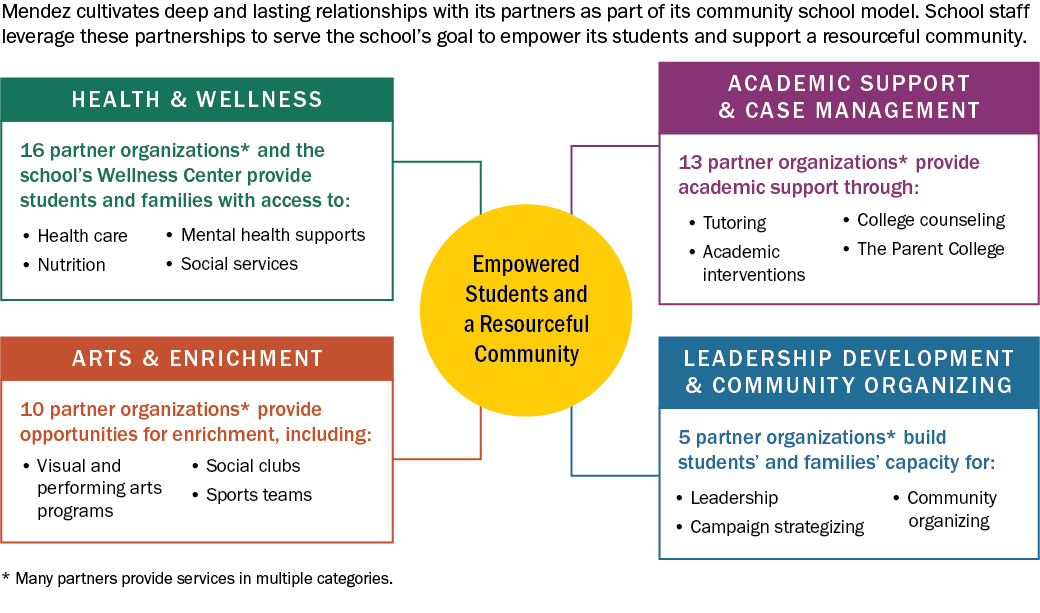“I think what makes us a community school is … acknowledging that the things that happen outside of our doors will also happen inside of our doors. … We have a responsibility to interact with the world outside of the campus, being not only a resource for the entire community and for the families that are here, but also looking to them as a resource, because we know that the best knowledge and the best practices that will help a community solve its issues are probably also in the community.”
What Students Need
The COVID-19 crisis only exacerbated the dramatic and growing economic inequality in our nation. More than half of public school students now live in low-income households, and these young people are living with the consequences of long-term disinvestment not only in our public schools but also in the social safety net, which used to provide more robust supports for struggling families. The more we know about brain development, the more we understand how much human beings need safe and nurturing environments and multiple supports for health and well-being to support development and learning. Unfortunately, with high levels of poverty, food and housing insecurity, lack of health care, and social violence, all too many young people today experience adverse conditions for development. These conditions produce high levels of continuous stress that undermine their ability to learn and grow in a healthy manner. If this stress is not addressed, and the situation causing the stress is not mitigated, it is much harder for students to succeed academically.
Schools cannot educate students effectively without attending to their other needs as well—including access to stable housing, healthy food, mental and physical health services, and the technology required for 21st-century learning. One important way to do this is by working in partnership with others in the community. Through trusting relationships and well-coordinated support, schools can ensure that students receive the health, social service, and learning opportunities they need to be successful. Evidence shows such structures can lead to improvements in students’ attendance, academic achievement, and high school graduation rates and to reduced racial and economic achievement gaps.141
For a school to work with the community, its staff must know the community it serves—its multiple cultures; its families, youth-serving and other organizations, and social patterns; and the cultural and other strengths that exist and could be assets for the school. Connecting deeply with the community is only possible when school staff have developed relationships with community leaders that are rooted in mutual trust and accountability. When such relationships take root, the school can truly become a center of the community.
Key Practices
Knowledge of the Community
Building strong community relationships can take years. Retaining teachers and principals matters a great deal, as does recruiting educators from the community and actively seeking out leaders and organizations with whom to partner. Teachers and school leaders who come from the community are well positioned to build the necessary connections, and parents or extended family members of students can also be key bridge-builders in this process. Educators who come from other communities or backgrounds need to listen and learn with humility. Schools can then become places for the community to celebrate its strengths, both through cultural programs and partnerships with local community initiatives.
Community Schools
Community schools are rooted in our understanding of how people learn. In such schools, a community school coordinator works to orchestrate multiple community resources; community leaders and families become close partners of the school; and the staff is organized to ensure that students get access to resources they need.
The community schools framework was developed to describe such schools that serve as community hubs and partner with community organizations to educate the whole child. The framework builds on a synthesis of more than 140 studies that found that effective community schools that boost attendance, achievement, and attainment are guided by four key pillars: integrated student supports; family and community engagement; collaborative leadership and practices; and expanded learning time and opportunities.142 Since the publication of the original research, two more dimensions have been added to communicate the ways that school climate and instruction should reinforce the goals of student support: culture of belonging, safety, and care and rigorous community-connected classroom instruction. (See Figure 11.)
These elements can take different forms across community schools because each school designs its program to meet the needs of its students and families, using the community’s assets as a starting point. In effective community schools, families, students, community leaders, and school staff collaborate on a comprehensive needs assessment, on design and planning of the program, and on its implementation.
A culture of belonging, safety, and care is developed in the ways we have described in this volume, through the use of structures for relationships, such as advisories and looping; explicit attention to social and emotional learning and restorative approaches; and a focus on culturally responsive and sustaining practices.
Integrated student supports, or wraparound services, bring together school-based and community-based resources to ensure that students receive the support they need to be able to learn, whether they need mental health services, physical health services, housing or food assistance for their family, or other supports. While many of these services are not provided by the school itself, the school becomes the resource hub, which allows students and families to receive services more efficiently (rather than navigating multiple bureaucracies on their own) and ensures that service providers and school staff can collaborate to support children, using a holistic, assets-based approach.
The supports provided in each community vary. When the Native American Community Academy in Albuquerque heard from its community that there was a need for wellness services provided through an Indigenous lens, the school developed a “Wellness Wheel” that students and staff could use to reflect on their own wellness practices in four areas—intellectual, physical, social-emotional, and community/relationship wellness—and then access services based on their needs. One of the school’s most popular supports is the Eagle Room, a culturally based space where students, staff, or family members can engage in self-reflection, meditation, or prayer, either during or after school. The school also partners with the First Nations School-Based Health Center—which specializes in culturally competent health care for the Native American community—to offer on-campus physical health, mental health, and dental services to students, families, and staff, free of charge and with no copayment.143

In the Koreatown neighborhood of Los Angeles, the RFK Community Schools campus houses six schools on the former site of the Ambassador Hotel, where Robert F. Kennedy was assassinated in 1968. Because the schools serve many immigrant families, the UCLA School of Law runs a comprehensive immigration legal clinic on the campus, providing “know your rights” training and materials, legal consultations, and full legal representation. Leyda Garcia, principal of the UCLA Community School, explains that the presence of the legal clinic complements the school’s curricular and other efforts to make students and families feel safe by honoring students’ immigrant origins: “Our families know that we are looking out for them.”144 Powerful student and family engagement is accomplished through these kinds of focused services as well as the strategies for communication, involvement, and decision-making described in Feature 8: Authentic Family Engagement and Feature 10: Shared Decision-Making and Leadership.
Collaborative decision-making is a key aspect of successful partnerships. When these community partnerships are implemented effectively, people and organizations from across the community come together and learn together how best to support students and families so that students are healthier and learn more and the school feels like the heart of the community. UCLA Community School founding lead teacher Rosa Jimenez explains how the community schools approach dovetails with a student-centered pedagogy and other features of effective secondary schools, including shared decision-making:
The fundamental difference [between a traditional school and a community school] is a commitment to democratic practices. We are constantly trying to figure out how to make decisions and problem-solve in a way that includes as many voices as possible. We’ve tried to flip the school hierarchy on its head and move away from traditional ideas of how a student learns and how teachers should think about their work. It allows for a lot of collaboration and a lot of decision-making and problem-solving using real data. … We get to know our students and community and try to be responsive to those needs.145

Expanded and enriched learning time allows for students to pursue their academic interests on a deeper level or to receive additional academic support where they need it. Some schools collaborate with volunteer programs to secure tutors who can assist students with reading, writing, and math skills. Others use peer tutoring or faculty assistance to provide additional help to struggling students. Enrichment opportunities can include independent study or small group projects; activities like robotics or music or art; cultural clubs; college and career preparation activities; or community service and internships. All of these can be led by, or conducted in partnership with, community leaders and organizations. Some of the best mentors for young people do not work in schools, and the opportunity to learn from a community-based professional or nonprofit leader may be one of the most important experiences a young person has during high school.
Community schools not only address social-emotional and socioeconomic barriers to learning; they also build in time for accelerating and differentiating learning to meet individual students’ needs. This can happen through one-on-one or small group tutoring or mentoring, or through supported homework time. This kind of expanded and enriched learning can happen in many configurations—elective periods during the school day, after-school programs, and summer programs, among others. Along with supports for engaging approaches to literacy and math learning, many community schools offer robust elective programs where students are encouraged to pursue different interests, from cooking to coding, from Dungeons and Dragons to disc golf. Rather than leaving such pursuits solely in the realm of student clubs, where only some students may access them, community schools create opportunities and expectations for all students to participate.
Community-connected learning is one outcome of this collaborative approach. This can take the form of projects in the community that support inquiry into community conditions and needs or that beautify or contribute to the community’s assets. It can also take the form of experiential learning in the community, through internships, civic engagement, or service learning. When students see how the math, science, and social studies content they are learning connects to their community—and when their efforts can help improve the welfare of others—they both see the relevance of schoolwork and develop their own sense of personal and social responsibility.
In sum, community school designs augment efforts to design relationship-centered schools that support deeper learning with connections to community organizations and assets that can further engage families and community organizations, creating the village that is needed to raise each young person.
School Profile: Connecting With the Community at Mendez High School


Additional Resources
- Framework
- Guide
- Guide
- Network
- Professional development
- Toolkit
- Toolkit
- Article
- Report
- Guide
- Website
- Guide
- Web page
- Toolkit
- Book
- Video
- Website